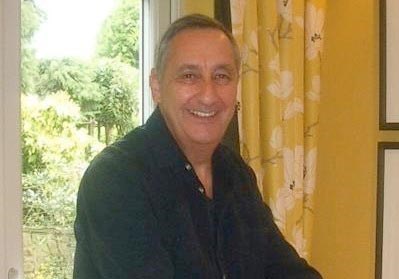Lee Phillips - hip replacement surgery
Lee Phillips had hip replacement surgery at Spire Leeds Hospital under the care of consultant orthopaedic surgeon, Mr Aaron Ng.
Lee, a commercial property consultant, first started with pain in his groin, which steadily worsened over time. Lee used to jog, play soccer, tennis and swim but had to stop all sporting activities due to the pain. His GP referred him to Mr Aaron Ng, consultant orthopaedic surgeon at Spire Leeds Hospital where x-rays revealed his left hip had worn down to bone on bone.
“I was shocked to discover my hip had deteriorated to the point of needing replacement, especially as I never really had pain in my hip so I didn’t realise it was anything so serious. I quickly realised how lucky I was to have been referred to Mr Ng who advised me not to wait to have surgery so that I could get back to being active again,” said Lee.

Lee underwent a total hip replacement in January 2017 at Spire Leeds Hospital.
“Before having the surgery I had reached the point where I was not able to do any exercise. I felt that I was not in control of my life. I think if you don’t exercise you regress very quickly, not just physically but mentally as well,” said Lee, who is married with two grown up daughters.
“I had never been into a hospital that didn’t feel and smell like a hospital. It was more like checking into a five star hotel,” he added.
Lee was out of bed and walking in the room just two hours after surgery. Just three weeks later he was on an exercise bike as part of his physiotherapy regime in Perform Leeds, Spire’s rehabilitation, sports and exercise medicine centre. “It was fantastic. To realise at that early point that I could exercise to some extent was very liberating.”
Commenting on the surgery, Mr Ng said, “Patients now demand better quality of life compared to 20 years ago. Extra consideration has to be taken to ensure the implant I used has a good track record in terms of longevity. Modern innovation and technology in hip replacement now allows patients to participate in high impact activities such as jogging, running and skiing.”
Mr Ng used a minimally invasive technique and a spinal anaesthesia with sedation. The worn ball and socket joint was replaced with a modern ceramic cup and ball/stem composite without cement. “I used an enhanced recovery programme involving local anaesthetic infiltration which means that most patients can be mobile on the same day and can go home just two to three days after surgery,” he said.
Lee went out for his first short jog a few months after surgery and is looking forward to getting back to other sports as well as the arrival of his first grandchild due in September. He said, “My recovery was miraculous really and remarkable that I had no pain after the operation. I’m taking it slowly, although it goes against my character, and will increase activity gradually; I feel an obligation to Mr Ng and his team not to mess it up.”
He added, “I have a new lease of life and feel very grateful to Mr Ng and his team at Spire for giving me my life back.”
Hip replacement surgery
Around 70,000 hip replacement operations are carried out in the England and Wales each year. Half of those are for the over 70’s, but now the number of younger patients opting for this type of surgery is growing.
In 2004-5 patients under 60 underwent 10,145 hip replacements rising to 17,883 in 2014-15. The number of hip replacement operations for people under 60 has risen 76% in the last decade.
Source: Royal College of Surgeons based on Hospital Episodes Statistics (HES) data for England.

